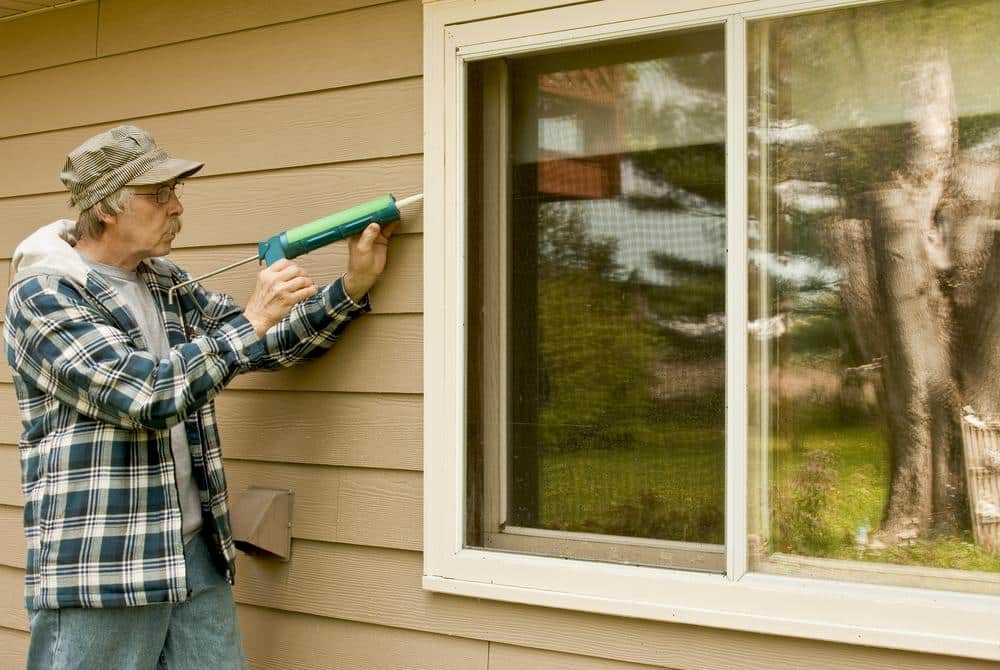
Air sealing is a cost-effective method to keep your home comfortable and energy efficient. According to Colorado University, small air leaks throughout the house can add up to the equivalent of leaving a window open 24/7 throughout the year.
While some smaller projects can be done yourself, you may need to contact an experienced contractor to seal more significant issues around your home properly. They will be able to provide solutions and help identify other potential problem areas throughout your property. Follow these steps to get started with air sealing your Denver home for a warmer winter.
Step One: Identify Air Leakages
The goal of air sealing is to close the gaps in your home that allow unwanted air while letting your temperature controlled air out. Knowing where to look will help you find these areas more quickly so that you can resolve the issue.
The first step to proper air sealing is identifying the areas that need it most in your home. While air leakages are usually found by following unexpected drafts, there are also areas where leakages may be more prevalent, even if undetected at first.
Common places that may the be source of air leakage throughout your home include:
– Fireplaces
– Plumbing Entries
– Windows
– Doors
– Ducts
– Fans and Vents
– Electrical Outlets
While a draft can be a crucial indicator of whether an area of your home needs air sealing, there are specific tests you can run before committing to a massive sealing project. Hiring a professional, BPI-certified energy auditor can measure the current level of air exchange in your home and make recommendations for the ideal standard rate of 0.35 air changes per hour (ACH).
Using a professional auditor will allow you to identify areas that may require sealing, while also prevent over-sealing your home. While it is ideal to lessen the number of air leakages as much as possible, specific areas of the house may require some air flow to prevent carbon monoxide poisoning, as well as allow fresh air to enter.
Once the air leakages are detected, it’s time to find the best solution for your air sealing needs.
Step Two: Select the Best Air Sealing for Your Home
Fortunately, there are plenty of methods available to air seal your home. Since every house is built differently and allows multiple ways for air leakages to occur, identifying the best air sealing solution for your situation is the next step to keep your air where you want it. The two primary methods you may see include:
1. Caulking
Used primarily to seal cracks and gaps, caulking is ideal for air sealing areas that are stationary. Anything less than a one-quarter inch between materials is a good candidate for caulking, which can be done quickly and inexpensively.
Different types of caulk are available. To find the best one for your particular situation, you can evaluate the materials that require caulking, along with the best compound and adhesion for those areas.
2. Weatherstripping
The other most common air sealing method is weatherstripping. This process is particularly useful for moving components like windows and doors. It’s essential to find weatherstripping material that can withhold friction, temperature fluctuations and regular wear and tear.
Often, weatherstripping needs to be replaced regularly to ensure that you get the most protection. However, selecting the best type of weatherstripping for your needs will help keep your home protected and avoid replacement for years to come.
While selecting the best materials and methods for air sealing your home, the U.S. Department of Energy has recommendations for the highest quality and most efficient ways to save energy.
Step Three: Reinforce Your Efforts
While proper air sealing is the first significant step to protecting your home from air leakages and saving on energy costs, it helps to reinforce your efforts with insulation.
Dirty or damaged insulation can be another cause of air leakages and can contribute to poor air quality in your home. Once you complete your preferred air sealing methods, proper insulation can further protect your property. It does this by trapping air inside and preventing the flow of unwanted air that could drive up your energy bill and cause cold drafts in your Denver home.
Denver winters can be brutal, but proper home care can keep you and your family warm with lowered energy costs. Air sealing methods are the first step to maintaining your interior temperature and enjoying a long winter of warmth and quality air.
Thank you for reading our blog! How can we help you? Contact us today.



